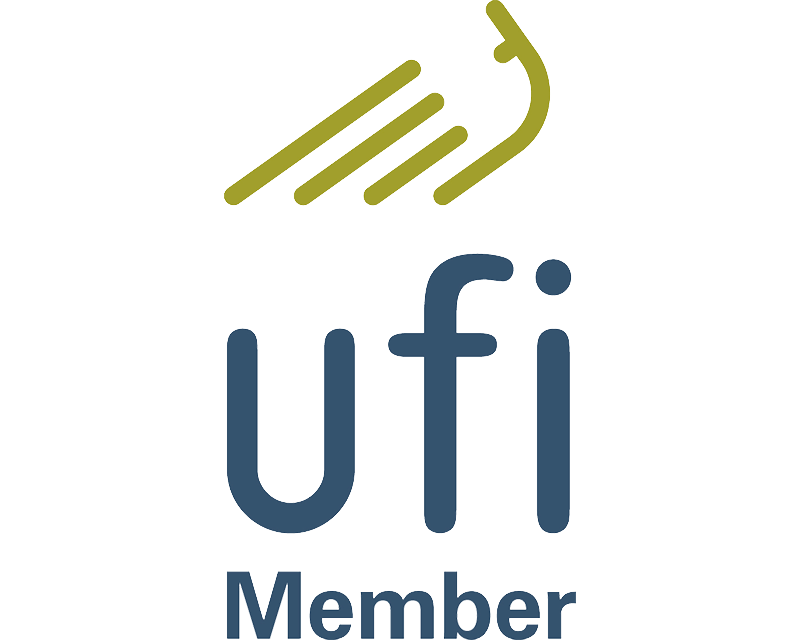2024 Knowledge Bar Schedule
Day 1 Tuesday, May 07, 2024
11:30 AM
Enbridge Activities in Minimizing Emissions from Compression and Eliminating Fugitive Emissions
Knowledge Bar
Enbridge Activities in Minimizing Emissions from Compression and Eliminating Fugitive Emissions
Tuesday, 07 May 2024
11:30 AM
Exhibition Hall
12:30 PM
Basic Rules for Sampling, How to Fix Common Grab Sampling Deficiencies - SESSION CANCELLED
Knowledge Bar
Basic Rules for Sampling, How to Fix Common Grab Sampling Deficiencies - SESSION CANCELLED
Tuesday, 07 May 2024
12:30 PM
Exhibition Hall
Basic Rules for Sampling Gases and volatile liquids must be collected and maintained at temperatures and pressures that inhibit phase changes, which can alter the samples’ composition. Remember these basic rules: • The sample must represent the process. • The sample must be timely. • The sample must be pure. • Sampling must be safe. How to Minimize the Potential for Human Error By necessity, grab sampling involves a technician physically drawing a sample from the process—this inherently introduces the potential for human error into your process. Strategies to limit these errors. • Documentation. • Simplification. • Automation. Best Practices for Sampling Gases and Volatile Liquids Optimizing your chemical processing costs and maintaining high-quality product outputs require regular capture of representative process fluids for laboratory analysis. Grab sampling—also called spot sampling, field sampling, or just sampling—helps validate process conditions and verify that the product you are making meets internal or customer-based specifications. Grab sampling can also help verify readings of online analyzers, an increasingly popular way to obtain real-time insights into your process.
1:30 PM
Eliminating Voluntarily Vented/Flared Gas Volumes Across the Gas Processing Value Chain
Knowledge Bar
Eliminating Voluntarily Vented/Flared Gas Volumes Across the Gas Processing Value Chain
Tuesday, 07 May 2024
1:30 PM
Exhibition Hall
Energy companies are under increasing pressure to mitigate methane emissions during common pipeline and facility operations. As a result, many are turning to gas recovery technologies to avoid venting or flaring. WeldFit’s ReCAP® Emissions Recovery System is a depressurization and gas recovery solution that does one simple, yet important, thing in support of end user methane emissions reduction goals: It eliminates the need for voluntary gas flaring or venting associated with blowdowns. The ReCAP® system is a self-contained emission recovery system with new transfer rate (XR) technology. Engineered to hit target emission evacuation levels with tightly calculated predictability, the biggest change it brings to the natural gas industry is that keeps the gas in the pipeline while reducing GHG emissions to nearly 100%. The impact of ReCAP on the energy industry covers the full spectrum of ESG driven emission reduction, safety, economic and energy efficiency, and advancement of standard technology into the 21st century. To date, WeldFit’s ReCAP Emissions Reduction System has captured more than 1 BSCF of methane and natural gas that would have previously been vented or flared. Not only are we saving the environment, but we have also helped our customers keep natural gas in the pipeline so it can reach the end user, where it provides its ultimate value.
2:30 PM
Reliable & Report Ready Material Verification: TVC Records Straight out of the Ditch
Knowledge Bar
Reliable & Report Ready Material Verification: TVC Records Straight out of the Ditch
Tuesday, 07 May 2024
2:30 PM
Exhibition Hall
The PLX-Portable from Plastometrex is a non-destructive testing tool for in-ditch Material Verification. The tool utilises a modular system to create shallow spherical indents in the surface of metal pipelines. It then scans the residual indent shape. This shape data, combined with inverse finite element analysis, enables the determination of full stress-strain curves [1], including the yield and ultimate tensile strengths. To support its adoption on oil and gas transmission pipelines, the tool has undergone a rigorous validation exercise, conducted in collaboration with prominent network operators, service providers, and the Pipeline Research Council International (PRCI). By March 2024, 180 pipes had been tested and, notably, evaluation using the Mean Absolute Percentage Error (MAPE) demonstrates that the tool has industry leading MAPE accuracy levels. Alternative statistical methods for quantifying accuracy levels, including Clopper-Pearson, Hanson-Koopman, a one-sided prediction interval method, and a linear regression method, have demonstrated comparable performance levels between the Plastometrex and MMT HSD tools. These results, corroborated through independent analyses by RSI Pipeline Solutions, will be presented in full. In addition, findings from blind network qualification tests conducted between June 2023 and March 2024 will be unveiled, highlighting the tool's consistency and robust performance. The presentation will also delve into the underlying scientific method, showcasing how the tool is able to provide instant, real-time results while in the ditch. By eliminating the need for measuring metal composition or grain size, the PLX-Portable expedites decision-making processes. This ensures prompt issue resolution, enabling real-time decision-making, and swift closure of dig-sites without delays in obtaining definitive test results. [1] Clyne, T.W., Campbell, J.E., Burley, M. and Dean, J., 2021. Profilometry‐Based Inverse Finite Element Method Indentation Plastometry. Advanced Engineering Materials, 23(9), p.2100437.
3:30 PM
Triple Offset Butterfly Valve
Knowledge Bar
Triple Offset Butterfly Valve
Tuesday, 07 May 2024
3:30 PM
Exhibition Hall
A. Historical butterfly valve evolution 1. Zero offset 2. Single offset 3. Double offset 4. Triple offset
B. Seating Designs of Triple Offset Valves 1. Wedge type 2. Flex Ring type 3. Static Ring type
C. Successful Applications of Triple Offset Valves 1. Steam 2. Process 3. Gas 4. Water
D. Conclusion E. Questions
Day 2 Wednesday, May 08, 2024
10:30 AM
Enbridge Activities in Hydrogen Blending
Knowledge Bar
Enbridge Activities in Hydrogen Blending
Wednesday, 08 May 2024
10:30 AM
Exhibition Hall
11:30 AM
Carbon Capture and Sequestration in Canada - Application of New Seismic Technologies for Injection Hub Planning, Target Reservoirs Monitoring
Knowledge Bar
Carbon Capture and Sequestration in Canada - Application of New Seismic Technologies for Injection Hub Planning, Target Reservoirs Monitoring
Wednesday, 08 May 2024
11:30 AM
Exhibition Hall
Accurate subsurface imaging forms a critical part of both the baseline evaluation and ongoing monitoring of Carbon Capture and Storage (CCS) projects. However, utilizing traditional 3D seismic baseline and 4D seismic repeat surveys can be costly. Additionally, these programs often require the movement of a significant amount of equipment, generating additional emissions. By utilizing new seismic acquisition technologies that minimize environmental impact while maintaining subsurface data quality, both baseline and ongoing monitoring programs can become more cost-effective and lower emission. Technologies such as miniaturized source and recording equipment as well as innovative cutting techniques are providing encouraging results, but the next step towards ecologically intelligent seismic surveys has emerged in the world of seismic program design (Vermeulen et al 2022). The focus of these new designs is to maximize subsurface resolution while minimizing the surface footprint. In forested regions, conventional geometry seismic programs may require cutting 10-25% of the trees within the program area to provide safe access for equipment deployment. Irregular or alternative geometries, however, can reduce the total amount of line clearing within a seismic program by up to 55%. These geometries can also be used in open areas where line clearing isn’t required and provide cost-reduction benefits due to more efficient field operations. This reduction in overall surface footprint also leads to a reduction in GHG emissions due to lower fuel consumption. In order to fully evaluate a new seismic acquisition method, the data must be examined through processing, interpretation, and inversion. Here we present the results from EcoSeis geometry validation tests where alternative geometries with as much as a 65% reduction in surface footprint are compared with traditional orthogonal geometries. Given the success of the initial collaborative research on lower footprint geometries (Naghizadeh et al 2023), a field trial utilizing one of the new EcoSeis geometries was acquired in Q4 2022. Preliminary results from processing this dataset will be presented along with detailed processing, interpretation, and inversion results from the larger study.
12:30 PM
Ekona’s Methane Pyrolysis Solution for Clean Hydrogen Production
Knowledge Bar
Ekona’s Methane Pyrolysis Solution for Clean Hydrogen Production
Wednesday, 08 May 2024
12:30 PM
Exhibition Hall
Ekona™ Power Inc. Ekona™ is a Burnaby-based company that is developing a novel methane pyrolysis solution for clean hydrogen production. Ekona’s solution converts natural gas into hydrogen and solid carbon, thereby reducing CO2 emissions when compared with conventional processes, like steam methane reforming. Ekona’s unique pyrolysis reactor uses the principles of combustion and high-speed gas dynamics to dissociate feedstock methane. It is low-cost, scalable, easy to integrate and leverages existing natural gas infrastructure to deliver a practical solution for clean hydrogen, wherever and whenever it is needed. xCaliber™ Reactor At the heart of Ekona’s methane pyrolysis solution is a novel reactor design that is based on a constant volume, combustion-driven process. Preheated methane feedstock is delivered to the reactor. Products of combustion are injected into the feedstock chamber, and rapid mixing provides the necessary energy exchange for the pyrolysis reaction. Product gases are then discharged from the reactor volume to downstream purification equipment, and the process is repeated. Ekona’s xCaliber reactor is non-catalytic, low-cost and mitigates carbon fouling issues that plague other methane pyrolysis platforms. PMP Process Ekona’s pulsed methane pyrolysis (PMP) process employs industry standard balance of plant equipment for carbon handling, hydrogen purification, compression, and thermal energy recovery, which simplifies process integration and mitigates development risk. The PMP solution produces two co-products, clean hydrogen and solid carbon, that can serve to decarbonize and drive value in numerous industries. Value Proposition Ekona’s PMP solution has the potential to achieve hydrogen production costs on par with conventional SMRs, while reducing process GHGs by up to 90%. And because the PMP is not reliant on CCS infrastructure, clean electricity or water feedstock, it can be flexibly deployed wherever natural gas infrastructure exists. Roadmap Ekona is in the process of a multi-stage technology development program. Ekona has completed the development and testing of a pilot-scale (200 kg/day) methane pyrolysis reactor and associated balance of plant equipment at its Burnaby test centre. In 2024, Ekona’s test facility will be expanded to incorporate new generations of reactor designs, as well as enhanced process integration and controls to deliver a 200 kg/day pilot system for evaluation. Ekona is also in the process of designing its first field unit, a 1 TPD customer demonstration plant that will be deployed with investor ARC Resources in Grande Prairie Alberta. Ekona Gold Creek will be commissioned and tested in 2025 and field operations in 2026 will inform commercial deployment programs beginning in 2026-2027. Presentation to Canada Gas & LNG Ekona will present its methane pyrolysis technology and how it provides a compelling solution for decarbonizing natural gas and LNG infrastructure.
1:30 PM
Advancements in Hydrogen Liquefaction: Harnessing Medium Voltage Drives and Motors for Efficient Operations
Knowledge Bar
Advancements in Hydrogen Liquefaction: Harnessing Medium Voltage Drives and Motors for Efficient Operations
Wednesday, 08 May 2024
1:30 PM
Exhibition Hall
In recent years, the global shift towards sustainable energy sources has intensified the exploration of hydrogen as a clean and versatile fuel. Hydrogen liquefaction, a critical step in the hydrogen value chain, plays a pivotal role in ensuring the efficient storage and transportation of this environmentally friendly energy carrier. This abstract delves into the technological innovations surrounding hydrogen liquefaction, focusing on integrating Medium Voltage Drives (MVDs) and Medium Voltage Motors (MVMs). The utilization of Medium Voltage Drives and Motors in the context of hydrogen liquefaction represents a significant leap forward in enhancing the overall efficiency and reliability of the process. MVDs provide precise control over the compression and refrigeration systems involved in liquefaction, optimizing energy consumption and minimizing operational costs. The scalability and adaptability of Medium Voltage Motors make them ideal for various capacities, catering to the diverse needs of hydrogen liquefaction facilities. One key advantage of employing Medium Voltage Drives is their ability to seamlessly adjust the speed and torque of compressors and pumps, ensuring optimal performance across varying operating conditions. This dynamic control enhances energy efficiency and extends the lifespan of equipment, contributing to a more sustainable and economically viable hydrogen liquefaction process. Furthermore, Medium Voltage Motors, characterized by their robust design and high-power density, prove to be instrumental in achieving the required rotational speeds for efficient compression and liquefaction. Their ability to withstand the demanding conditions of hydrogen processing plants makes them a reliable choice for long-term operation, reducing downtime and maintenance costs. This abstract also explores the safety considerations associated with hydrogen liquefaction and highlights how Medium Voltage Drives play a crucial role in implementing fail-safe mechanisms. The precision control afforded by MVDs ensures that the liquefaction process adheres to stringent safety standards, mitigating potential risks and reinforcing the viability of hydrogen as a safe energy carrier. In conclusion, the integration of Medium Voltage Drives and Medium Voltage Motors in hydrogen liquefaction represents a significant technological advancement with far-reaching implications for the energy industry. By enhancing efficiency, reliability, and safety, these innovations contribute to the realization of a sustainable hydrogen economy.
2:30 PM
Decarbonizing Natural Gas via Methane Pyrolysis
Knowledge Bar
Decarbonizing Natural Gas via Methane Pyrolysis
Wednesday, 08 May 2024
2:30 PM
Exhibition Hall
In the face of pressing global demands for energy decarbonization, hydrogen emerges as a pivotal player in sculpting the future energy paradigm. This transition, while technologically challenging, unveils vast commercial prospects, particularly for sectors where traditional decarbonization pathways prove inadequate. Key to this evolution is hydrogen's integration into heavy industry, transportation, and high-heat processes, with sustainable production at its core. Among various production techniques, Methane Pyrolysis emerges as a transformative solution, poised to reshape the hydrogen market dynamics and spur new business ventures within the hydrogen economy. Methane Pyrolysis stands out by converting methane into hydrogen and solid carbon through a zero-emission process. This breakthrough aligns with environmental goals and signals a shift in hydrogen supply chains. Modern Hydrogen, leading in this field, employs a patented Concurrent Combustion and Pyrolysis process, facilitating on-site hydrogen production without the high energy demands of traditional methods. This innovation bolsters the economic and scalability aspects of hydrogen production, opening doors to unprecedented market opportunities and business models. The impact of Modern Hydrogen's technology on commerce is significant. By circumventing the need for extensive electricity, it lowers operational costs and reduces exposure to fluctuating energy prices. Its modular design offers adaptability and scalability, crucial for industries transitioning to hydrogen, providing a scalable solution that aligns with market evolution. Furthermore, the solid carbon byproduct presents new value creation channels. Unlike CO2, which is challenging to sequester, solid carbon finds utility across various industries, offering an additional revenue stream and improving the economic model of hydrogen production. Methane Pyrolysis marks a critical juncture for business development and market growth in the hydrogen sector. It affords companies a strategic edge, enabling market entry and contributing to the decarbonization of essential industrial processes. As clean hydrogen demand surges, the capability for on-site, cost-effective, and scalable production distinguishes competitors, potentially redefining the energy sector's competitive framework. In summary, Methane Pyrolysis represents a fusion of technological innovation and market evolution. Modern Hydrogen's pioneering efforts not only advance clean hydrogen production's technical feasibility but also herald novel commercial strategies and business models. As the hydrogen economy evolves, adopting these innovations is crucial for unlocking new markets and fostering sustainable growth. Stakeholders keen on leveraging these opportunities must integrate Methane Pyrolysis into their strategic initiatives. For insights on Modern Hydrogen's role in advancing sustainable business practices within the hydrogen economy, visit www.modernhydrogen.com.
Day 3 Thursday, May 09, 2024
10:30 AM
Emissions Reduction - You Can't Reduce What You Can't Quantify
Knowledge Bar
Emissions Reduction - You Can't Reduce What You Can't Quantify
Thursday, 09 May 2024
10:30 AM
Exhibition Hall
With growing concerns over climate change and the increasing focus on reducing greenhouse gas emissions, energy companies are facing greater scrutiny and pressure to manage their emissions more effectively and provide transparent reporting. Energy stakeholders are increasingly aware of the potential future liabilities associated with uncertain economics and changing regulations around greenhouse gas targets and emissions management. They are looking for assurance that companies are proactively managing emissions and have a clear plan in place to demonstrate emissions reductions and reduce future risks. They want to see quantifiable and credible reductions in emissions inventory, which requires operators to ensure a more accurate baseline starting point. To date, most emissions inventories have been created using a bottom-up methodology achieved by multiplying activity factors (counts of components, equipment, or throughput) by emission factors (estimates of gas-loss rates per unit of activity). Most bottom-up inventories use emission factors derived from industry averages rather than measurements specific to the company. Bottom-up inventory emission rate estimates are consistently lower than site-level and regional emissions measurements in academic research. To stay competitive and mitigate potential risks, energy companies need to adopt new technologies and strategies to accurately quantify both the baseline, and reduction initiatives. If you haven’t measured it, how do you confidently state you’ve reduced it? Navigating this space has become increasingly difficult, especially for understanding and tracking methane emissions using measurement-based techniques. Technology is often deployed, and data is collected. What many operators struggle with is the representative deployment strategy and how to accurately use that data to inform their inventory. Are we using the right technology in the right places at the right frequency? Are we putting reduction capital towards the right projects? Highwood Emissions Management works with energy companies to help navigate a range of carbon standards and methodologies, understand detection and measurement technology options, reconcile measurement informed inventories, and identify reduction pathways. Highwood also guides clients through a growing number of voluntary initiatives to recognize and distinguish companies demonstrating their leadership to investors, end users, and the public. Highwood represents the necessary balance between benefiting from our environment while caring for it. We take pride in helping diverse stakeholders to expertly navigate this balance. Our mission is to collaborate, innovate, and educate our way to a world with effective and affordable emissions management solutions.
11:30 PM
Terminal Towage: Creating Value, Supporting Reconciliation & Minimising Environmental Impact
Knowledge Bar
Terminal Towage: Creating Value, Supporting Reconciliation & Minimising Environmental Impact
Thursday, 09 May 2024
11:30 PM
Exhibition Hall
Towage is an integral part of the modus operandi of a marine terminal. Sustainable, efficient, reliable, local and environmentally conscious ship assist services are critical for the competitive operation of an LNG terminal. With a fleet consisting of more than 450 vessels, Svitzer operates tugs and other crafts at LNG terminals worldwide, spanning all four continents. The many facets of a towage operation cater for value creation across multiple segments of society;as a niche segment of the shipping world, towage is very much local and anchored within the communities where the vessels operate. From a decarbonisation and environmental impact perspective, each terminal operation calls for tailored, bespoke solutions, ranging from net-zero fuels to minimising underwater noise to prevent disturbing marine mammals. Through supply chain development, challenging predetermined concepts, R&D and investment in new technologies, we have gained considerable knowledge in the utilisation of alternative fuels in tugs and small crafts. Testament to our commitment to become fully carbon neutral by 2024, we have reduced our emissions by 24% (39k tonnes of CO2) compared to 2021, are building the world’s first methanol fueled tug and have an MoU to develop an ammonia fueled tug on the Canadian eastern seaboard. In the context of LNG terminals, we are the first company to operate an LNG-electric hybrid tug in an environmentally sensitive area in Australia. Towage has also significant potential to enable unlocking considerable societal value if appropriately integrated from the early stages of a terminal project. The opportunity to create value encompasses the entire project's lifecycle, including construction, operation, crewing, and the creation of additional commercial opportunities for local coastal communities. We have developed effective models to maximise and facilitate the growth of local suppliers, especially within the marine and engineering sectors. This is achieved through the implementation of long-term collaborative contracts and upskilling programs, all tied to tangible local procurement targets. In a practical application, fostering direct indigenous employment through dedicated upskilling and career development programs, coupled with collaborations with indigenous businesses, has played a pivotal role in the success of our operations in the Asia-Pacific region. Lastly, as a commercial towage operator, we have also gained first-hand experience of the additional economic development opportunities that having a marine capability can unlock, particularly in remote locations. For instance, having tugs available can enable local costal communities to import and export their products much more efficiently, therefore promoting the development of the local economy. We would be delighted to have the opportunity to share our knowledge and learnings at the Canada Gas Conference’s knowledge bar.
Beware of email scams
DMG Events has been informed from several exhibitors are receiving scam emails . Please be aware these offers are fraudulent. These scammers do not have any relationship with DMG Events.In accordance with GDPR, CASL and other jurisdictional data privacy regulations, DMG Events will never sell your data to any third party organisations. Please see our Privacy Policy for more information regarding how DMG Events will process and store your information.
















